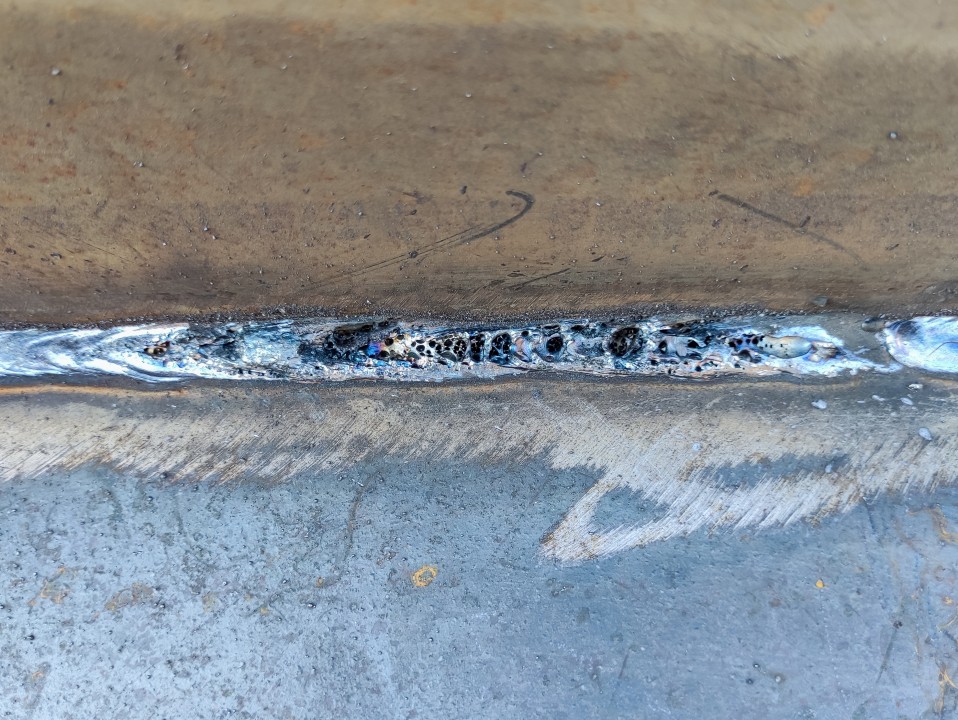Professional Guidance on What is Porosity in Welding and How to Address It
Professional Guidance on What is Porosity in Welding and How to Address It
Blog Article
Porosity in Welding: Identifying Common Issues and Implementing Ideal Practices for Avoidance
Porosity in welding is a prevalent issue that commonly goes unnoticed till it causes substantial problems with the stability of welds. In this conversation, we will certainly discover the key aspects adding to porosity development, analyze its damaging effects on weld efficiency, and discuss the ideal practices that can be adopted to minimize porosity event in welding procedures.
Common Root Causes Of Porosity

Making use of unclean or damp filler products can present impurities right into the weld, contributing to porosity issues. To minimize these typical causes of porosity, comprehensive cleansing of base metals, proper protecting gas choice, and adherence to ideal welding parameters are essential methods in achieving high-grade, porosity-free welds.
Impact of Porosity on Weld Quality

The visibility of porosity in welding can significantly jeopardize the architectural honesty and mechanical residential properties of welded joints. Porosity develops voids within the weld steel, compromising its overall stamina and load-bearing capability. These gaps function as anxiety focus points, making the weld much more vulnerable to cracking and failing under applied lots. Additionally, porosity can decrease the weld's resistance to deterioration and other ecological aspects, even more decreasing its durability and efficiency.
Welds with high porosity levels have a tendency to display lower effect stamina and reduced capacity to deform plastically before fracturing. Porosity can hinder the weld's capability to successfully transfer forces, leading to premature weld failure and possible safety dangers in crucial frameworks.
Finest Practices for Porosity Prevention
To improve the structural stability and top quality of bonded joints, what certain procedures can be implemented to lessen the event of porosity during the welding procedure? Porosity prevention in welding is critical to guarantee the stability and strength of the last weld. One effective technique is correct cleaning of the base metal, getting rid of any kind of contaminants such as corrosion, oil, paint, or wetness that could result in gas entrapment. Making certain that the welding equipment is in great problem, with clean consumables and appropriate gas flow prices, can also considerably reduce porosity. Additionally, preserving a steady arc and controlling the welding criteria, such as voltage, present, and travel rate, assists develop a consistent weld pool that minimizes the risk of gas entrapment. Using the appropriate welding technique for the certain product being bonded, such as adjusting the welding angle and weapon position, can even more prevent porosity. Routine assessment of welds and prompt removal of any kind of issues identified throughout the welding process are important practices to prevent find out this here porosity and create premium welds.
Value of Appropriate Welding Methods
Applying correct welding techniques is paramount in ensuring the structural stability and quality of bonded joints, building on the foundation of effective porosity prevention steps. Welding methods straight impact the total stamina and durability of the bonded structure. One vital facet of correct welding strategies is maintaining the appropriate heat input. Excessive warm can bring about increased porosity because of the entrapment of this page gases in the weld pool. On the other hand, insufficient warmth might cause incomplete combination, producing possible weak points in the joint. Furthermore, using the ideal welding specifications, such as voltage, current, and take a trip speed, is crucial for accomplishing sound welds with marginal porosity.
Moreover, the selection of welding process, whether it be MIG, TIG, or stick welding, need to line up with the details needs of the task to guarantee optimal outcomes. Proper cleansing and preparation of the base metal, as well as selecting the appropriate filler product, are additionally essential parts of efficient welding methods. By adhering to these best techniques, welders can minimize the risk of porosity formation and create premium, structurally audio welds.

Examining and High Quality Control Actions
Quality control procedures play an important duty in validating the honesty and reliability of welded joints. Evaluating procedures are necessary to identify and prevent porosity in welding, guaranteeing the stamina and longevity of the end product. Non-destructive screening methods such as ultrasonic screening, radiographic testing, and visual evaluation are typically employed to recognize possible problems like porosity. These strategies allow for the evaluation of weld high quality without jeopardizing the integrity of the joint. What is Porosity.
Post-weld examinations, on the various other hand, analyze the last weld for any kind of defects, including you could look here porosity, and verify that it meets defined standards. Carrying out an extensive high quality control strategy that includes detailed screening procedures and inspections is extremely important to decreasing porosity concerns and ensuring the general quality of welded joints.
Final Thought
Finally, porosity in welding can be a common concern that affects the quality of welds. By determining the usual sources of porosity and carrying out finest methods for prevention, such as correct welding methods and testing measures, welders can guarantee top quality and reliable welds. It is vital to focus on avoidance techniques to lessen the incident of porosity and maintain the stability of bonded structures.
Report this page